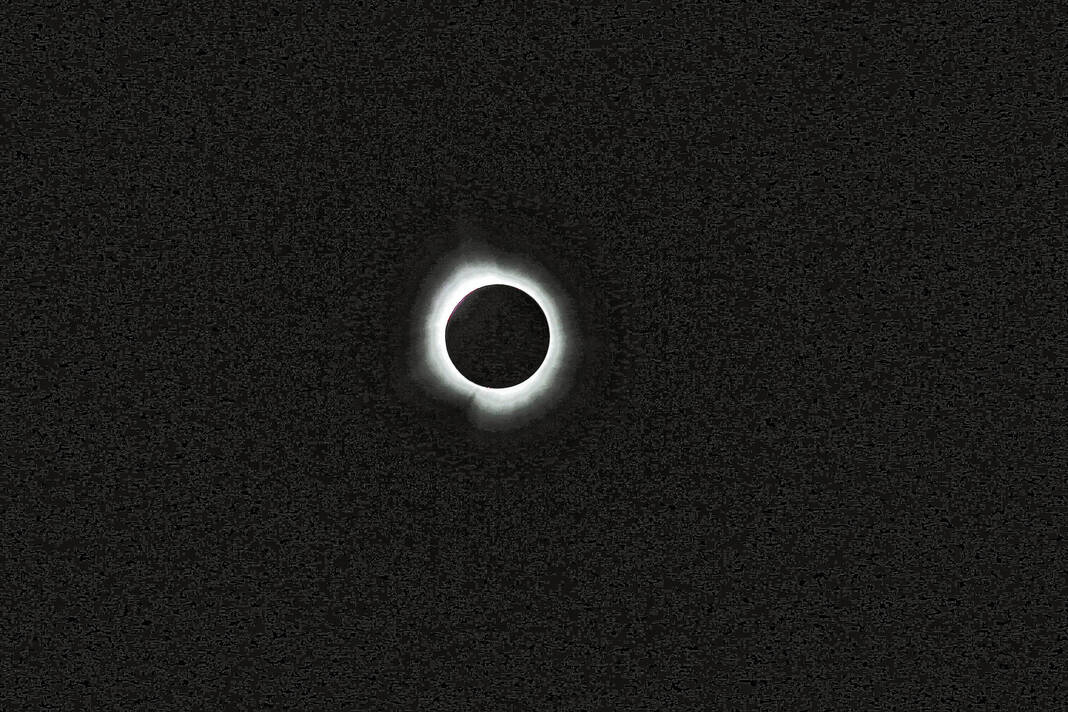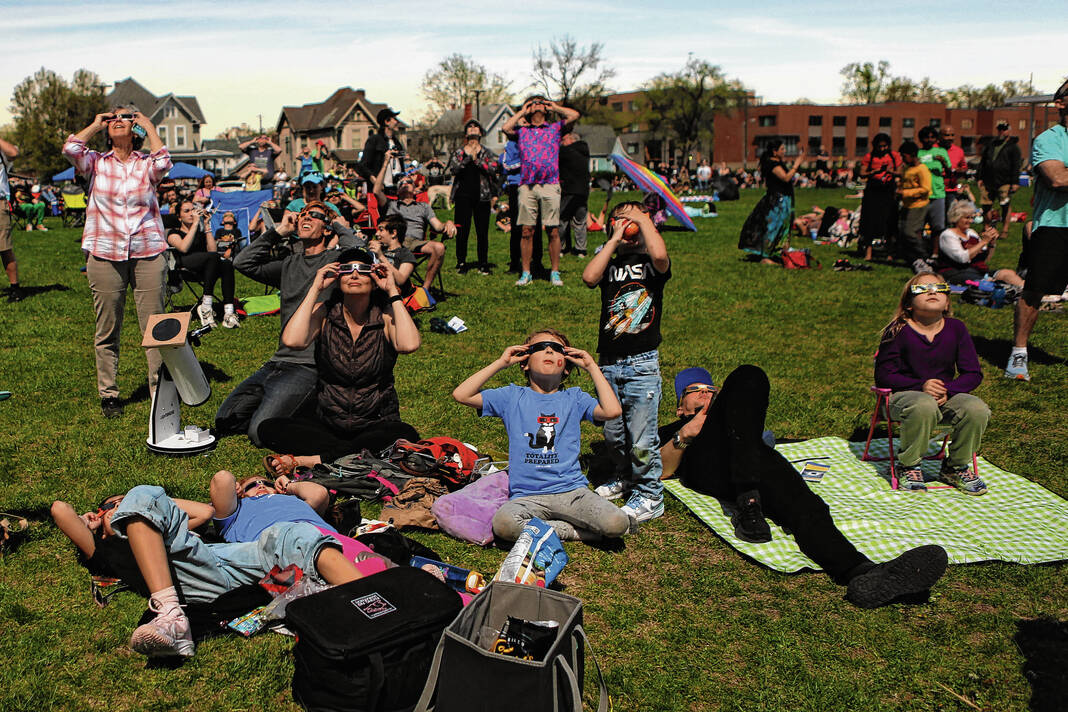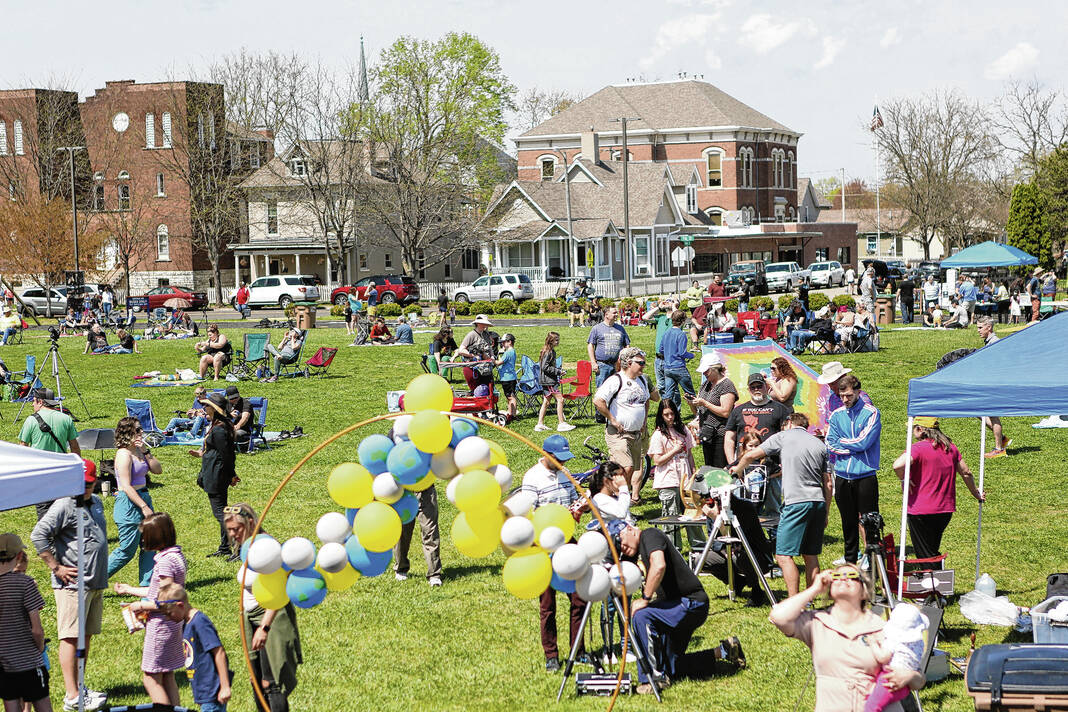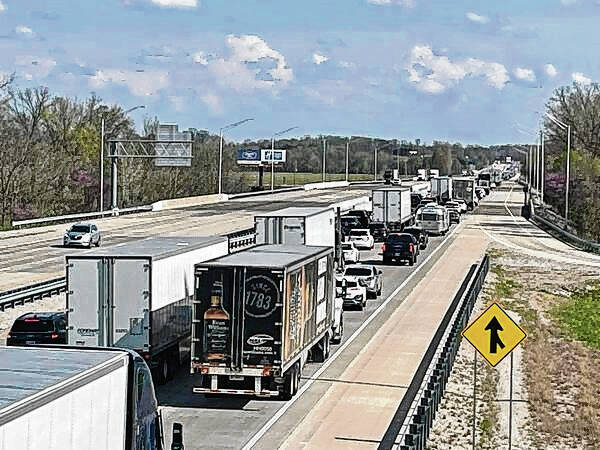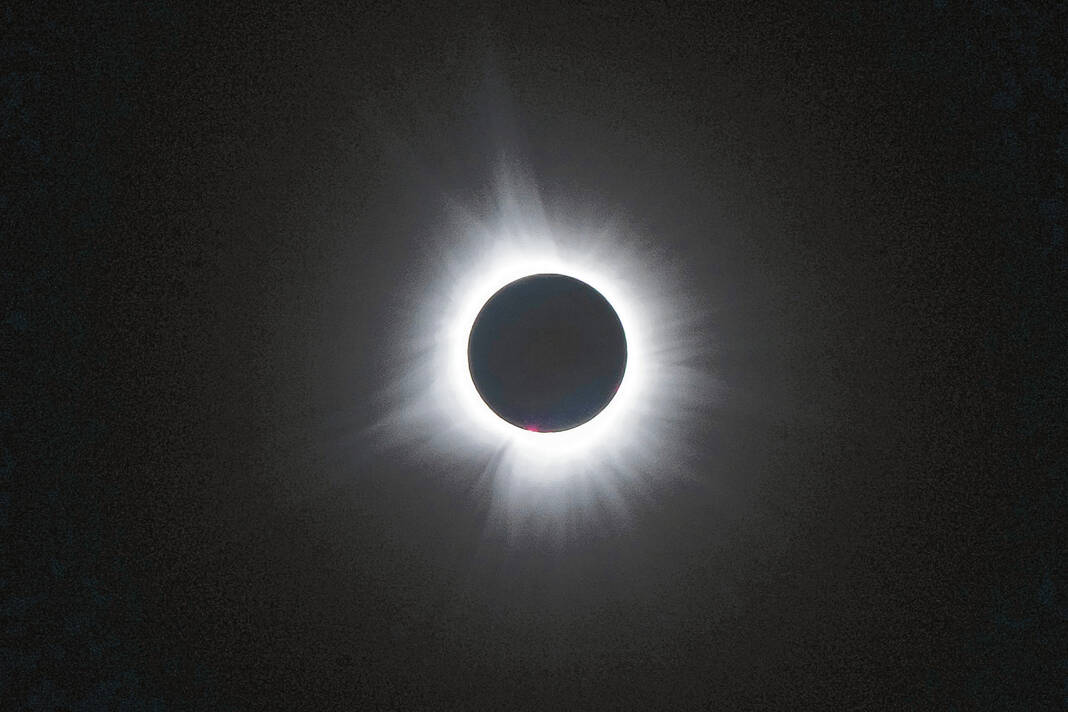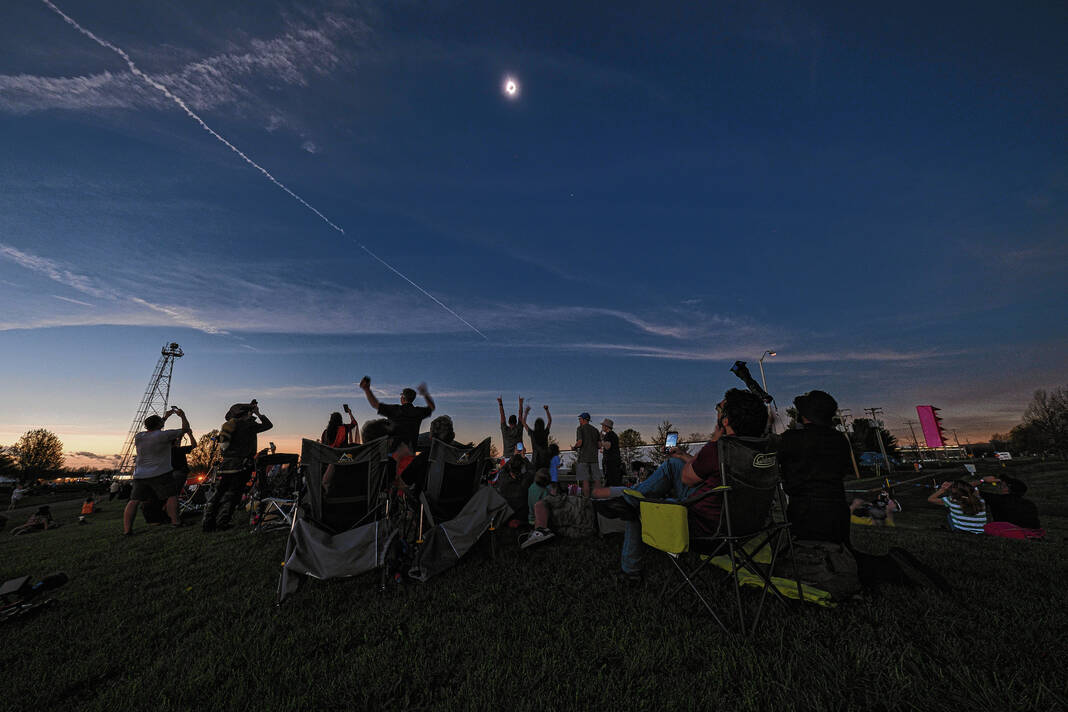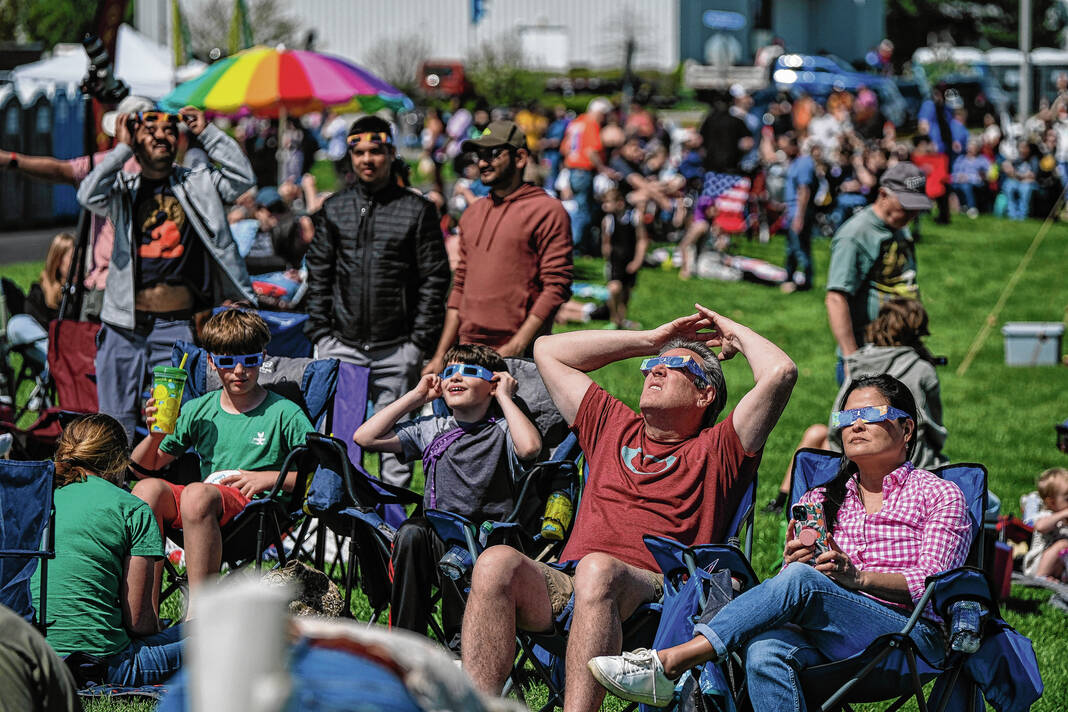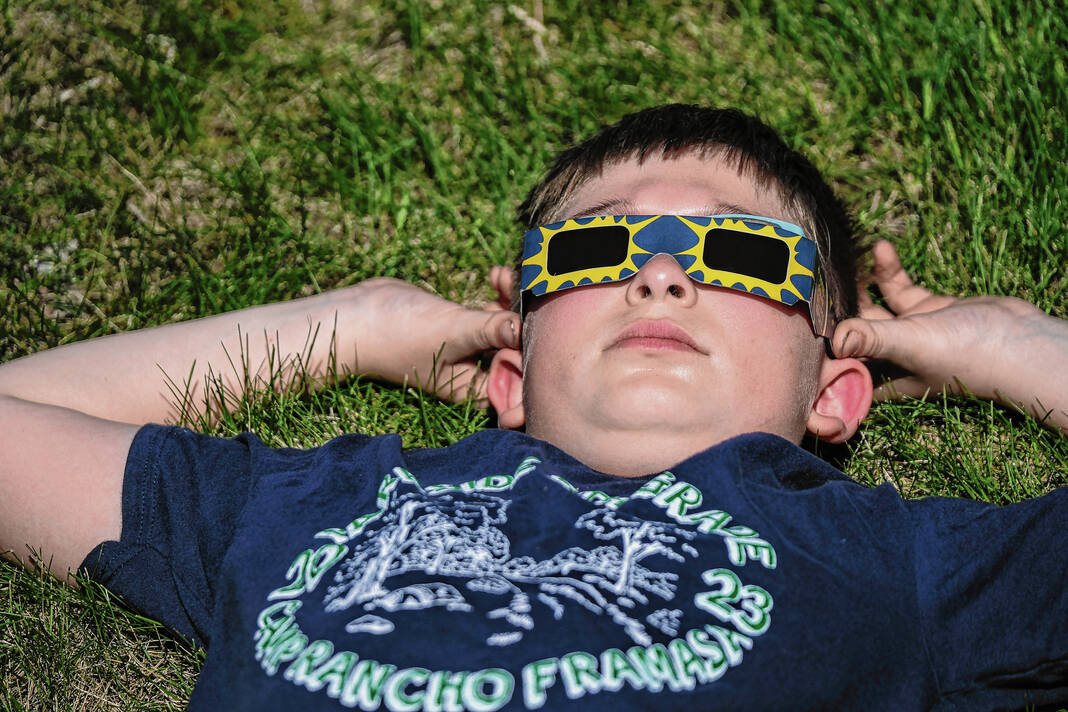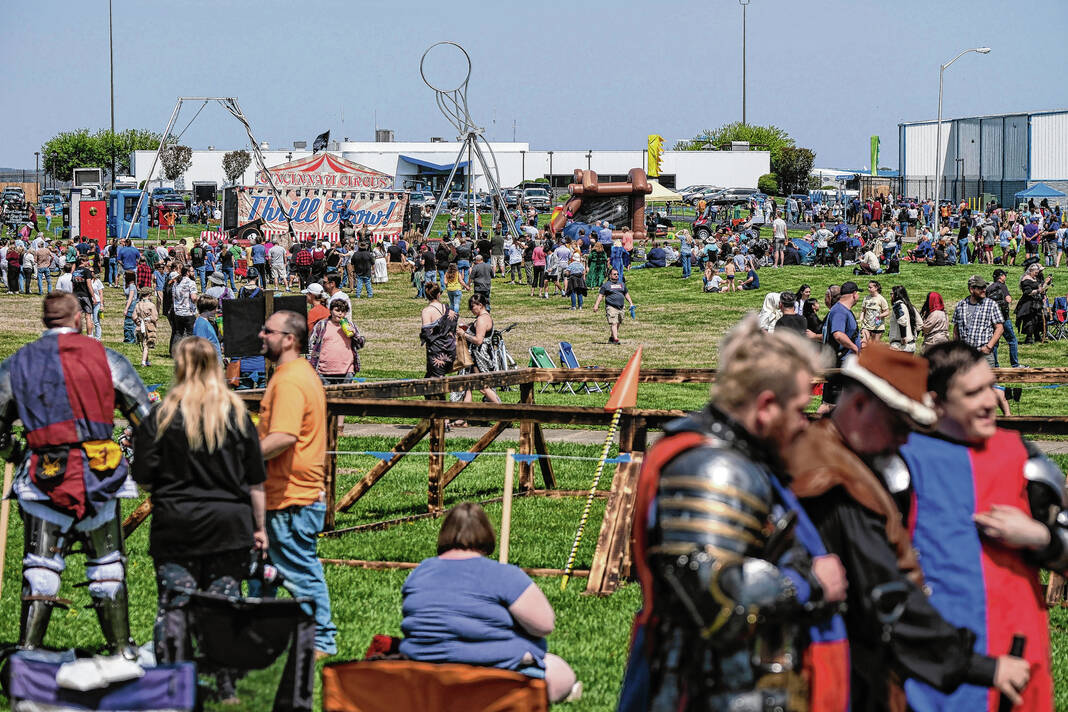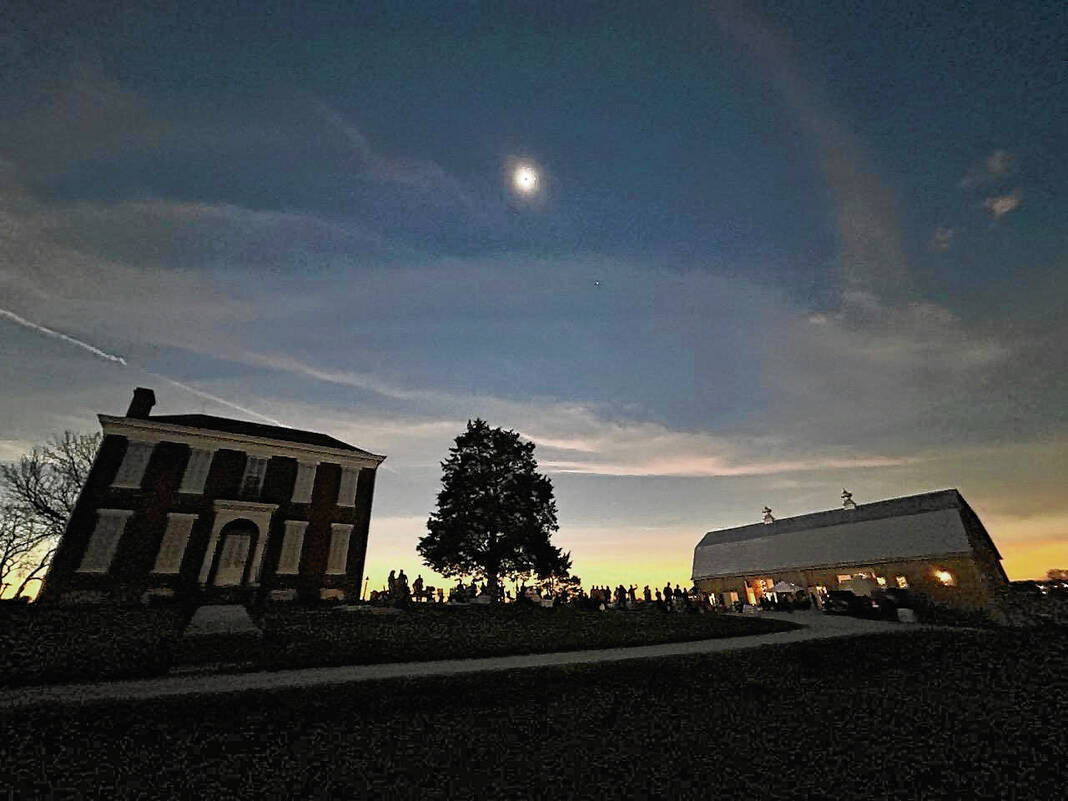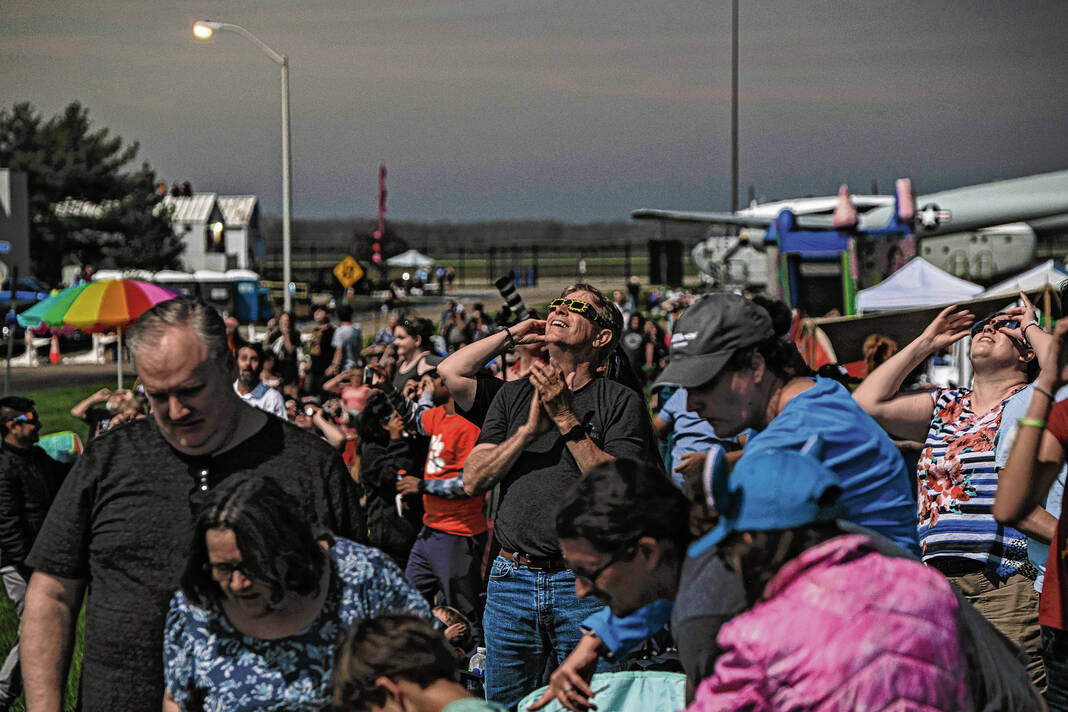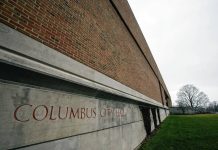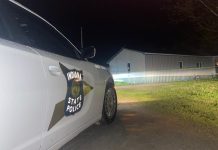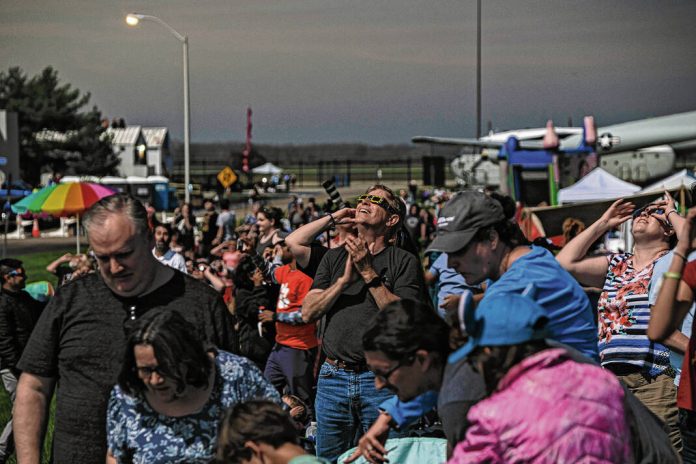
Mike Wolanin | The Republic Spectators put their eclipse view glasses back on as the totality of the total solar eclipse ends during the Eclipsing the Renaissance eclipse viewing event at the Columbus Airport Airpark in Columbus, Ind., Monday, April 8, 2024.
The total solar eclipse generated a record number of visitors stopping by the Columbus Area Visitors Center Monday from areas ranging from Chicago to Kentucky to Virginia. And the agency sold out of most eclipse merchandise — caps, T-shirts, you name it — by noon in a record-setting day for all souvenir sales, according to Erin Hawkins, the center’s director of marketing.
“It was like a swarm of locusts came through the gift shop,” she said of brisk sales even by 10 a.m.
She laughed when asked if tourism officials were disappointed that the area never saw the six-figure influx of visitors that some said could be possible.
“The Columbus Area Visitors Center is in no way at all disappointed,” Hawkins said, pointing out out that the eclipse attracted many first-time visitors and, “gave us the opportunity to share Bartholomew County with people who will plan return trips.”
The biggest event draw, according to organizer estimates, was the Eclipsing the Renaissance festival at Columbus Municipal Airport, with 4,000 in attendance over four-and-a-half hours under sunny skies and temperatures in the mid-70s.
Some volunteers guessed that perhaps that figure could have been higher without some existing confusion, since some visitors said others skipped attending because they thought the airplane parking and registration fee of $100 was somehow for vehicles. The event’s Facebook page and more reiterated repeatedly in capital letters that vehicle parking and admission was free.
“I don’t know how we could have possibly done any more than we did on that,” said Brian Payne, airport director.
His staff and planning committee found themselves on the receiving end of compliments from festival vendors at the end of Monday’s event. Some vendors said they attend 30 such festivals per year nationwide — and they never had been to one so well planned.
More than 1,000 people from more than 20 states as far away as California and Utah were estimated at the Bartholomew County Historical Society’s “Eclipsarmonia” with a chamber group from the Columbus Indiana Philharmonic at the Henry Breeding Farm near Edinburgh. The group, under the direction of Isaac Selya, performed such classics as “Here Comes the Sun.”
One attendee was there for her 22nd total solar eclipse.
One group from Louisville, Kentucky, hired a mini-bus and driver to bring them to the gathering with a $15 or $20 per car-load admissi0n.
“I think the attraction was partly the Philharmonic, partly the farm location and partly the convenience being just off the interstate (65),” said Diane Robbins, the historical society’s executive director.
She passed credit to the visitors center for its months-long advertising campaign to get people to Columbus events, and to the historical society’s social media campaign. And she praised the Philharmonic, and said there could be a possibility of other future collaborations.
“We both felt that it was the perfect partnership,” Robbins said.
First responders spent over a year preparing for the worst to happen during the eclipse, but were not sure what to expect. It ended up going smoothly, according to Bartholomew County Chief Deputy John Martoccia.
“I’m not even sure we had an eclipse-related call,” Martoccia said.
The entire Bartholomew County Sheriff’s Department, including its leadership, worked this past weekend and Monday. However, once deputies went on duty and it was “quiet for a while,” the department started sending deputies home.
Martoccia said he thought weather forecasts that at one point predicted clouds and rain on the day of the eclipse may have discouraged people from coming to Bartholomew County.
“I think the whole cloudiness and possible rain happening that people just didn’t come here,” Martoccia said. “…I don’t know what happened. I would say the weather, but that’s just me.”
However, Martoccia said it still was better to be prepared for the worst.
“The crowds just didn’t come here. But, you know what, we were prepared,” Martoccia said. “…We were definitely prepared for pretty much anything. But if we didn’t prepare for it and something happens, where would we be?”
“I’m just glad it’s behind us now, and we can move on,” Martoccia added.
The day also was “smooth” for the Columbus Police Department, according to CPD spokesman Lt. Matt Harris. CPD also staffed more officers than usual but ended up making some adjustments to staffing to minimize overtime.
“…Very few issues, which is what we want to see,” Harris said.
CPD and other departments planned for the types of crowds that Hopkinsville, Kentucky, saw for the 2017 total solar eclipse. Hopkinsville, a city of around 32,000 people located about 70 miles northwest of Nashville, Tennessee, reported that 116,500 poured into the city to watch the eclipse.
However, Hopkinsville was no ordinary destination for the 2017 eclipse. NASA had designated the city as the “point of greatest eclipse.” Officials there said that designation likely made the city more appealing to astronomy enthusiasts.
This time around, NASA set up an official broadcasting site at the Indianapolis Motor Speedway event, which attracted thousands of people.
At the same time, Harris said he thinks some of the projections of large crowds may have encouraged local residents to stay home on Monday and the long path of totality across much of Indiana and neighoring states gave people lots of options for where to witness the celestial event.
“I think that kept some of the local folks away,” Harris said, referring to the projections. “Everyone was fixated on that big number of people that possibly could have been in Columbus, and we certainly wanted to be prepared for that. That’s why you saw the large amount of planning that went on. We were in meetings for over a year trying to get ready for this because we saw what Hopkinsville experienced in 2017.”
“I’d rather have overprepared and had adequate staffing for the event and everybody have a good time, versus, ‘Hey, we don’t have enough officers and we’re starting to see problems because of that,’” Harris added.
Indiana State Police said the only traffic complication on Monday was a noticeable uptick late Monday afternoon as I-65 became bumper to bumper in all lanes heading southbound from Columbus after the eclipse.

